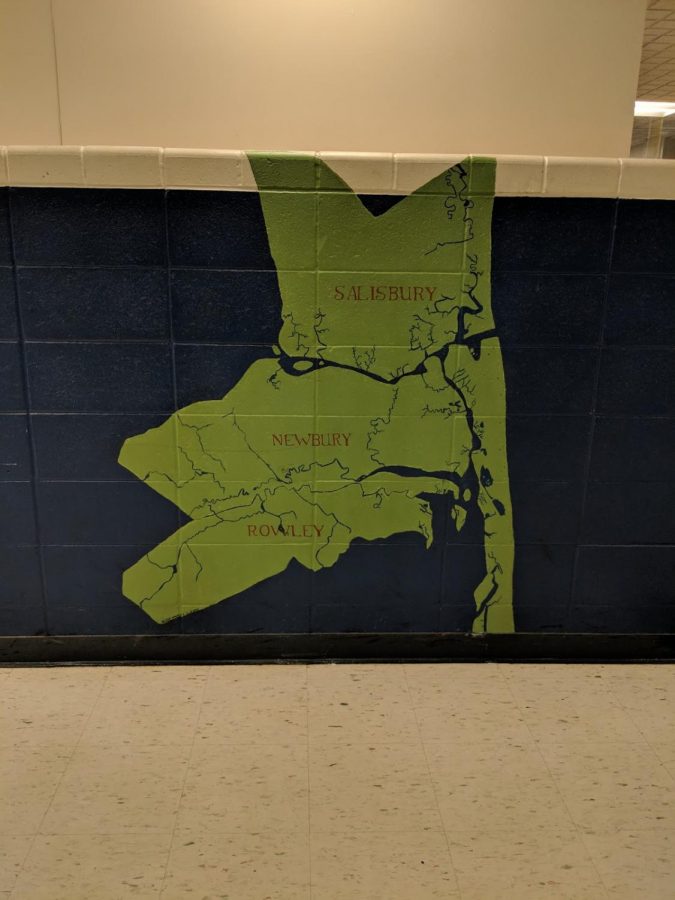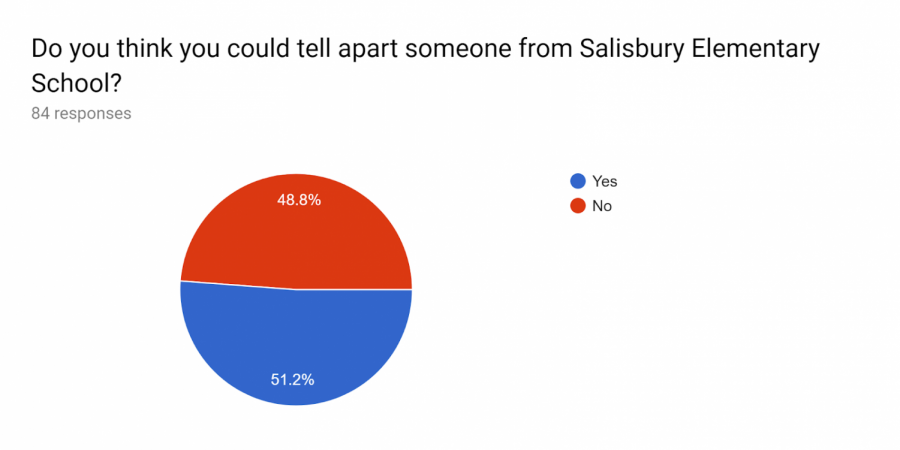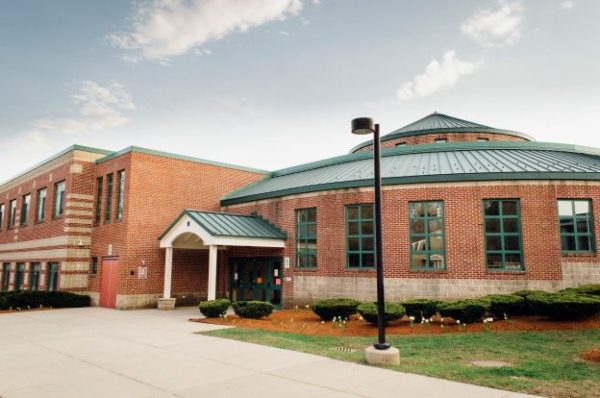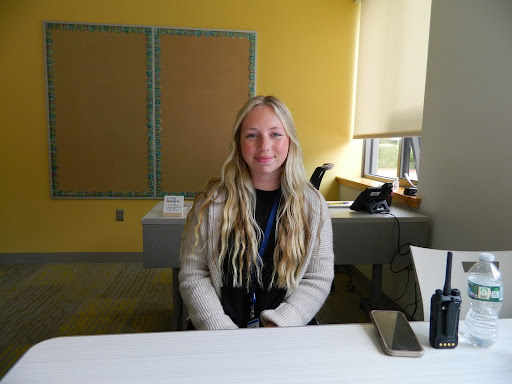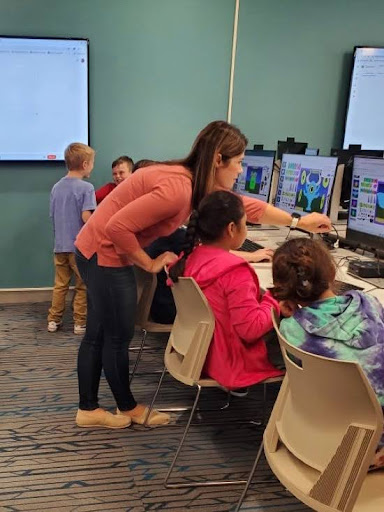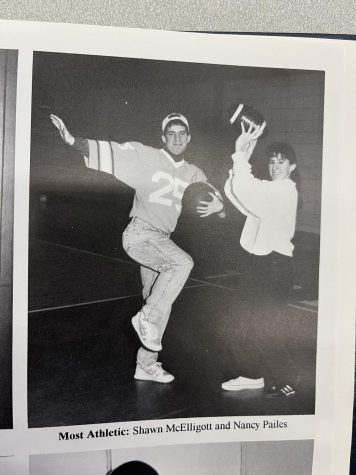Three Towns, Six Hundred Eighty One Differences
The Differences Among the Students of Triton
A painting just outside of the main office that shows the three towns, reminding the students that walk by it everyday of the unity and origin of the school.
“I feel like Newbury kids are more preppy, Rowley kids are a nicer version of Salisbury kids, and Salisbury kids are like greasy bums most of the time, or they’re loud athletes,” said Salisbury Elementary attendee Jeremy Duford in a survey that was conducted.
Triton High School is composed of three elementary schools: Newbury Elementary, Salisbury Elementary, and Pine Grove. The three schools aggregate into the Triton community, creating a diverse and interesting population of 681 students.
The transition from elementary school to middle school can be intimidating for a lot of kids. This is amplified at a middle school such as Triton where there are three elementary schools coming together to form one large community with students from many backgrounds.
This can make assimilating into the new crowds difficult for some people, but, when it’s broken down, is there really a noticeable difference in these kids? How different are they from each other, and are there stereotypes about these students?
A survey was sent to the entirety of the Triton High School student body, asking three questions: If they could discern Newbury, Rowley, and Salisbury kids, and what set them apart if the answer was yes. This survey brought in dozens of responses from the students, giving their opinions and thoughts on the differences in the schools, if any.
As of February 26th, there were 83 responses to the survey. On average, participants in the survey were confident that they could discern people from Salisbury Elementary and Newbury Elementary, at rates of 51.2% and 53.6%, respectively. However, only 38.1% of participants felt that they could tell apart someone from Pine Grove.
“Pine Grove kids are fairly generic. There is a lot of variety in Rowley. Some are more like Newbury kids and some are more like Salisbury kids. It is hard to tell a lot of the time,” said senior Ainsley Marsh.
There seems to be a general consensus that students who come from Newbury Elementary school are preppy, rich, care about academics, and are in the band and choir.
According to the survey, Salisbury Elementary kids tend to be more rowdy, rambunctious, and somewhat problematic in the classroom.
Then come the Pine Grove students who teeter on the the edge between N.E.S kids and S.E.S kids. They are, according to responses posted in the survey, “normal.” Senior Anna Behringer said that Pine Grove students are “Well rounded, a mix of the best of both [N.E.S and S.E.S].”
Alongside the survey, the Triton Voice wanted to perform an experiment. During a lunch period, we had 4 students (Kyle Brancaleone and Justin Szymanski of Rowley, Tirth Patel of Salisbury, and Liam Murray of Newbury) try to see if they could figure out where a student came from. The results from the experiment can be seen below.
| Name | Round 1 | Round 2 | Round 3 | Total |
| Liam Murray | Fail | Fail | Fail | 0/3 |
| Justin Szymanski | Success | Fail | Success | 2/3 |
| Kyle Brancaleone | Fail | Fail | Success | 1/3 |
| Tirth Patel | Success | Fail | Fail | 1/3 |
Math/Economics teacher Mr. Dube even tried to see if he could tell which school students came from. He tried our experiment, and was wrong about all four of the students participating.
Some students will end up going to multiple elementary schools in the district if their family moves, or for other reasons. Brittney Nalesnik, 18, from Salisbury went to Newbury Elementary and Salisbury Elementary, and said she really did not notice much of a difference in the student base.
“It’s hard to really say if there was a discernible difference between kids from Salisbury and Newbury because I experienced different grade levels at each school. Not to generalize all students from Newbury, but I feel like Salisbury had more of a variety of children from diverse backgrounds. In middle school I felt like it wasn’t really noticeable at all,” stated Nalesnik.
This shows a contrasting view to what the survey showed, however it is necessary to show these opposing views and see where the those who can not tell a difference come from. It is surprising that Nalesnik, after seeing all three schools, was unable to see a difference in the students.
She also stated that having our community of three towns allowed for students to make new friends from different areas coming into middle school, and overall created a better environment for the most part.
“I think that a lot people did remain friends with their elementary school friends. The middle and high schools are not very large so I had no trouble with remaining friends before high school and middle school. However, people did make friends with others who did not attend the same elementary school. You grow a lot in between and during school transitions. So it’s natural to grow apart and make new friends. You find people who you get along with and share common interests. I feel like, if anything, at Triton, people’s friend groups expand with a combination of old and new friends,” said Nalesnik.
However, we must discuss another possibility: the differences between people from the different schools is merely superficial. It would not be surprising if there weren’t vast differences between the three schools. P.G.E.S, N.E.S, and S.E.S, are 95.2% white, 94.1% white, and 86.1% white, respectively. The three schools are within 11 miles of each other; it is likely that students shared a similar upbringing.
If this is the case, then all of the data that we collected was fabricated in a sense by the students of the school; stereotypes that are not necessarily true, and stigmas that are created by the students that attend Triton. In fact, many teachers try to throw the idea of any stereotype out of the window when they have a new bunch of students. Four teachers from the elementary and middle schools were reached out to for interviews on the topic, and only one responded: Mrs. Melanie Babendreier.
“I have always made it a habit to ignore my students origins. I don’t want to have any preconceived opinions, and I’m determined to give each of my students a brand new start,” said Babendreier, the 7-3 English teacher. In fact, 48.5 percent of the students who responded to the survey indicated that they could not tell apart the students from one or more of the schools.
However, this is not the majority, and that means that there must be some kind of perceived difference between the students from the three towns. The survey shows that 51.5 percent of students think they notice a difference in their peers. But, in experimentation, the differences may not be discernible.

My name is Michael Fish, a senior at Triton High School and a staff writer for the Triton Voice. I am interested in writing about stories that will help...

My name is Joshua Lind. I am a 17-year-old, tri-citizen senior at Triton High School. I am currently taking Mr. Allen's journalism class. I like to write...


